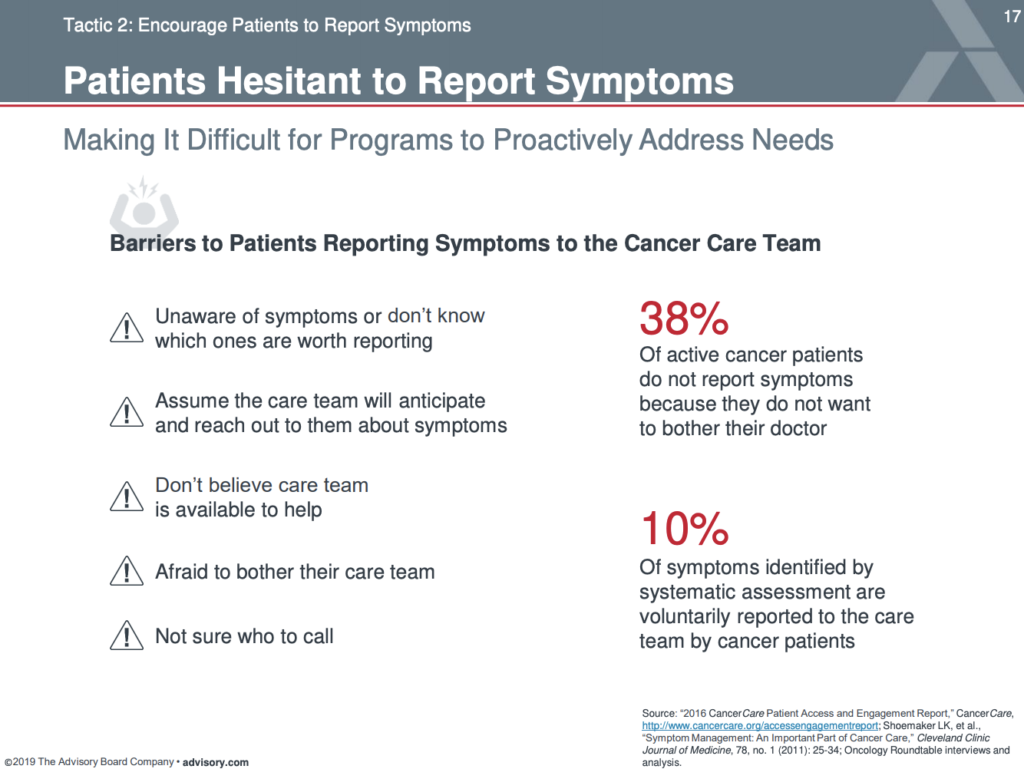Recently Navigating Cancer hosted a webinar from the Advisory Board’s Oncology Roundtable titled, “Tactics to Reduce Avoidable ED and Hospital Use.” We were really excited to bring this presentation to our community – our patient relationship management digital platform enables quick symptom management and remote monitoring for cancer patients – and we are always working to make it even better.
Cancer care providers are concerned about this topic, which gets a lot of attention – and for good reason. There is a heightened urgency for cancer patients for several reasons as highlighted by the Oncology Roundtable:
- Cancer patients experience significant symptoms throughout care
- ED visits and hospitalizations contribute greatly to avoidable costs
- Symptom management is a big opportunity for cost savings
- ED visits lead to lower quality of care (high risk of infection, lack of oncology expertise) and satisfaction (wait times, unfamiliar providers)
Interested in viewing compelling case studies and research from the Advisory Board?
The importance of symptom management
Symptom management is not only key to preventing unnecessary urgent care utilization, it’s also emerging as a priority for payers and other entities. A program led by MN Community Measurement, a nonprofit organization that works to drive improvement in healthcare cost and quality, tied symptom control patient-reported outcomes to mandatory quality reporting. CMS measure OP-35 is aiming to reduce preventable ED visits and hospitalizations by tracking cancer patients who have an ED visit or inpatient admission for one of ten conditions within 30 days of receiving chemotherapy. And clearly, for value-based models, where practices are trying to reduce the total cost of care, keeping patients out of the ED is key.
Top 3 tactics to reduce ED utilization
The Oncology Roundtable shared 3 tactics to tackle this problem:
Risk Factors
Note drivers of utilization.
Symptoms
Encourage patients to report.
Resources
Dedicated role for urgent care.
Tactic 1: Identify drivers of avoidable utilization. Consider risk factors including tumor sites, stage, comorbidities, and services used to identify patients who may benefit from added support or closer monitoring.
Tactic 2: Encourage patients to report symptoms. Patients are hesitant to report symptoms for a variety of reasons including not wanting to bother their care team and not knowing who to call. Make it easy – consider an ePRO program like Navigating Cancer’s Health Tracker – so that patients can let you know how they’re feeling with a few clicks.
Tactic 3: Dedicate resources to urgent symptom management. Combine technology with flexible schedule for same day appointments, reassign a nurse or APP for urgent care of symptom management, and – if you have the resources – a dedicated center for urgent care can be hugely impactful.

Interested in learning more? Download the presentation!
